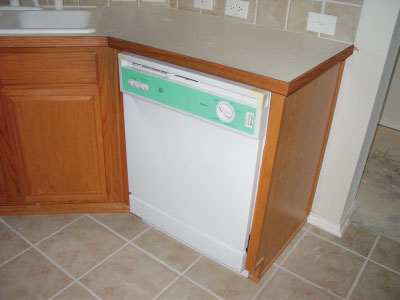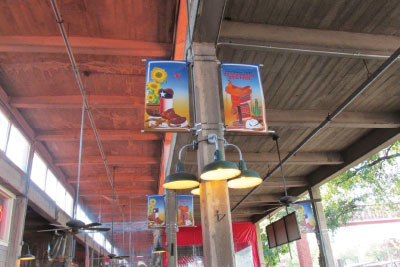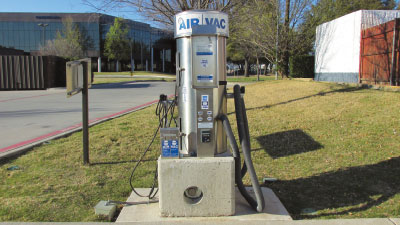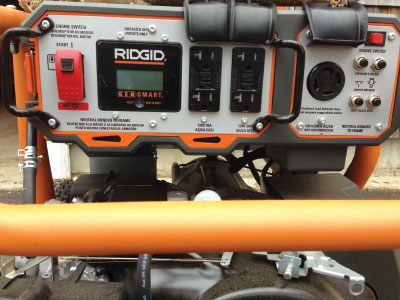The words and phrases we use to describe situations and things can alter the values for different people on different things. In that vein, we find ourselves once again on the threshold of a new and revised National Electrical Code® (NEC) with new and revised words and phrases, in an attempt to keep up with our ever-changing electrical industry.
According to the National Fire Protection Association (NFPA), there were 3745 proposals submitted to NFPA recommending changes from the 2011 NEC to the 2014 NEC. In addition to these proposals, there were 1625 comments submitted concerning the NEC Code-Making Panels’ responses to these proposals. In this article, we will look at some of the more noteworthy changes that occurred in the 2014 edition of the NEC. This article should serve as foreshadowing to IAEI’s Analysis of Changes, 2014 NEC textbook and PowerPoint training material. ThisAnalysis training material should be available by the time you arrive at your IAEI Section Meetings this fall.
Code-Wide Changes
Revision: 600 Volts to 1000 Volts Threshold
There were 120 proposals submitted to raise the 600-volt threshold in the NEC to 1000 volts in the 2014 NECCode cycle. This resulted in numerous changes throughout the NEC from 600 volts to 1000 volts. These proposals were submitted by the High Voltage Task Group (HVTG), which was appointed by the NEC Correlating Committee. For the 2014 NEC, the work of the HVTG had the primary focus of raising the voltage threshold in the NEC from 600 to 1000 volts. Today, emerging technologies such as wind electric generating systems are operating at just over the 600-volt threshold. Solar photovoltaic (PV) systems are currently being installed at dc voltages over 600 volts up to and including 1000 volts, 1200 volts, 1500 volts, and 2000 volts dc
Chapter One – General
New: Article 100 Definition: Retrofit Kit
A new definition of retrofit kit was added to Article 100 as this term applies to LED listed retrofit kits used for luminaires and signs, as referenced by new requirements in Articles 410 and 600. Extensive upgrades are underway in the sign and lighting industries to achieve greater energy efficiency in signs and luminaires by replacing in-place illumination systems with light emitting diodes (LED) technology. This will incorporate field modifications of signs or luminaires. Field modifications of utilization equipment usually require a field evaluation by a qualified nationally recognized testing laboratory (NRTL). Testing laboratories, such as Underwriter’s Laboratories (UL), have developed protocols for these field conversions. When installed within the testing laboratory parameters, these field conversion retrofit kits do not compromise the safety profile of the listed sign or luminaire.
New: 110.21(B) Field-Applied Hazard Markings.
A new sub-level (B) was added to 110.21 for Field-Applied Hazard Markings, to add specific requirements for warning labels and similar markings where required or specified elsewhere in the Code. The NEC contains several requirements for labels to be installed on wiring methods and equipment. These required labels or markings typically include one of the following hazard commands: DANGER, WARNING, or CAUTION. With no standardization for labeling, the results were inconsistent application of these NEC rules. This new requirement will incorporate consistent uniformity to rules where additional direction and guidance were needed. These markings, signs or labels should meet ANSI Z535.4 for suitable font sizes, words, colors, symbols and location requirements. Coordinated companion proposals and comments were submitted where the caution, warning, and danger markings or signs are required throughout the NEC with reference to this new requirement in Article 110.
New: 110.25 Lockable Disconnecting
Means in Article 110.
A new 110.25, Lockable Disconnecting Means, was added to the 2014 NECto deliver a one-stop location providing consistent requirements for a lockable disconnecting means. Forty-six companion proposals were submitted throughout the NEC to reference this new requirement and to send users of the Codeback to one location for lockable disconnecting means requirements. These companion proposals were submitted by a Usability Task Group assigned by the Technical Correlating Committee (TCC) to look at the numerous locations in the 2011 NEC that referenced lockable disconnecting means requirements.
New: 110.26(E)(2) Dedicated
Equipment Space for Outdoor Installations.
A new provision for dedicated equipment space was added at 110.26(E)(2) for outdoor installations of electrical equipment. This new requirement now calls for the same basic dedicated equipment or electrical space for outdoor installations that has been in effect for indoor installations at 110.26 since the 1999 edition of the NEC. Outdoors, some of the same “equipment foreign to the electrical installation” is often present such as gas piping, water piping, mechanical refrigeration lines, irrigation equipment, phone and internet equipment, compressed air lines, and other non-electrical equipment. When installed in the dedicated electrical space, these foreign items impede access to the electrical equipment. This is true regardless if the electrical equipment is installed indoors or outdoors. This space above and below the electrical equipment should be dedicated to the electrician for the installation of electrical conduits, cables, etc., in and out of panelboards, switchgears, etc.

Photo 1. Dedicated equipment space is now required for outdoor electrical equipment, not just for indoor equipment.
Chapter Two – Wiring and Protection
New: 210.8(A)(10) GFCI Protection for Dwelling Unit Laundry Areas.
Dwelling unit laundry areas will now require GFCI protection for all 125-volt, single-phase, 15- and 20-ampere receptacles installed in a laundry room. The presence of a laundry room sink is no longer the driving factor of whether GFCI protection is required or not. As the requirements for GFCI protection has been expanded throughout the NEC over the last fifteen code cycles, the number of electrical shock incidents related to consumer products has continued to decline over that time. Increased usage of GFCI protection for personnel at receptacles of residential homes is a highly effective means of further reducing the potential for electrical shock hazards.
New: 210.8(D) GFCI for Kitchen Dishwasher Branch Circuit.
A new provision was added which will now require GFCI protection for all outlets that supply dishwashers installed in dwelling units. This would include a receptacle outlet or a hard-wired outlet for a dishwasher. Modern electronically controlled dishwashers have different failure modes than their electromechanical ancestors. End of life for today’s dishwashers can result in increased risk of electrical shock, which can be mitigated by providing GFCI protection for outlets supplying dishwashers.

Photo 2. Dwelling unit dishwashers will now require GFCI protection.
Revision/New: 210.12(A)(1) thru (A)(6) AFCI Protection for Dwelling Units.
AFCI protection methods were expanded and language was put into a list format. The list of rooms in a dwelling unit that will now be required to be provided with AFCI protection was expanded to include kitchens and laundry areas. AFCI protection is now required for all 120-volt, single-phase, 15- and 20-ampere branch circuits supplying not just outlets but also devices that are installed in the list of rooms requiring AFCI protection at 210.12(A). The first two exceptions were revised to positive language and put into a list format of six provisions for providing AFCI protection to the branch circuit(s) involved. Provisions for the use and installation of outlet branch circuit (OBC) AFCI devices were greatly expanded. The three existing Informational Notes were revised and updated for clarity.
New: 210.17 Electric Vehicle Branch Circuit.
New provisions were added to require outlet(s) installed for the purpose of charging electric vehicles to be supplied by a separate branch circuit with no other outlets. A new Informational Note was also added to point users of the Code to 625.2 for the definition of an electrical vehicle. It should be noted that this new requirement does not demand that an outlet(s) for the specific and sole purpose of charging EV equipment be installed. This new requirement simply states that where such EV charging outlet(s) are installed by choice, these outlet(s) must be supplied by a separate or individual branch circuit with no other outlets. This new provision for EV charging will go a long way in ensuring that EV charging can be completed safely and effectively without overloading an existing branch circuit. Along these same lines, a new provision was also added at 210.52(G) requiring a receptacle to be installed for each car space of a multi-car garage.
Revision: 250.66(A) and (B) Connections to a Rod, Pipe, or Plate and Concrete-Encased Electrode(s).
As far as sizing a grounding electrode conductor, the requirements are the same in the 2014 NEC as they were for the 2011 NEC. Explanatory-type language and plural text were added to 250.66(A) and (B) to clarify that the sole connection provisions of these subsections pertain to the types of electrodes in these subsections, and the sole connectionsizing provisions are not forfeited if more than one of the specified types of electrodes involved are present.
New: Table 250.102(C) Sizing Bonding Conductors and Jumpers.
A new Table 250.102(C) entitled, “Grounded Conductor, Main Bonding Jumper, System Bonding Jumper, and Supply-Side Bonding Jumper for Alternating-Current Systems” was added to the 2014 NEC to be used for sizing grounded conductors, main bonding jumpers, system-bonding jumpers, and supply-side bonding jumpers, rather than Table 250.66. References to this new table were revised throughout Article 250. This new Table 250.102(C) and the included notes to the table will apply to other fault-return carrying conductors if the supply conductors do not have overcurrent protection on the supply side. Table 250.122 would continue to be used for sizing fault-return carrying conductors, such as equipment grounding conductors, if the supply conductors have overcurrent protection on the supply side.
Chapter Three – Wiring Methods
New: 300.38 Raceways in Wet Locations Above Grade.
A new section was added to Part II (over 1000 volts, nominal) of Article 300 to indicate that the interior of raceways installed in wet locations above grade are now considered to be a wet location. This will bring aboveground installation requirements for over 1000 volts consistent with the requirements in 300.9 for 1000 volts and under.
Revision/New: 310.15(B)(3)(c), Exception and Table 310.15(B)(3)(c) Raceways and Cables Exposed to Sunlight on Rooftops.
The title and parent text at 310.15(B)(3)(c) were revised for clarity from “Circular Raceways Exposed to Sunlight on Rooftops” to “Raceways and Cables Exposed to Sunlight on Rooftops.” The basic provisions for applying an ambient temperature adjustment correction factor where any type of raceway (not just circular raceways) is exposed to direct sunlight on or above rooftops have not changed. Provisions for cables installed on or above rooftops have been added as well. Cables were subject to these ambient temperature adjustment correction factors in the past, but the language indicated that the cable(s) had to be installed in a raceway. A new exception was also added that will allow the employment of Type XHHW-2 conductors, which is a thermoset insulated conductor, to be installed in raceways or cables on rooftops without having to apply an ambient temperature adjustment correction factor for these conductors.
Revision/Deletion: 310.15(B)(7) Sizing 120/240-Volt, Single-Phase Dwelling Services and Feeders.
The previous Table 310.15(B)(7) has been deleted entirely. The parent text at 310.15(B)(7) has been revised and broken up into four level 1 list items. Rather than use previous Table 310.15(B)(7) for sizing service conductors and the main power feeder for dwelling units, the user of the Code is left with a calculation to perform. The ampacity values found at Table 310.15(B)(16) can be reduced by 17 percent (not less than 83 percent of the service or feeder rating), which will require the circular mils properties of Table 8 in Chapter 9 to be brought into the now required calculation. A new Informational Note will take users of the Code to Example D.7 in Annex D for an example of how to perform this dwelling unit service and feeder calculation.
Revision: 314.27(A)(1) Boxes at Vertical Surface Luminaire or Lampholder Outlets.
The title of 314.27(A)(1) was changed from “Wall Outlets” to “Vertical Surface Outlets” as not all vertical surfaces where luminaire or lampholders are mounted are necessarily in a wall. Text was also revised in the subsection and in the exception reflecting this vertical surface vs. wall surface fact. New language was added to reflect that a luminaire or a lampholder can be mounted “on” a vertical surface as well as “in” a vertical surface.
New: Article 393 Low-Voltage Suspended Ceiling Power Distribution Systems.
A new article for Low-Voltage Suspended Ceiling Power Distribution Systems was added to address low-voltage Class 2 ac and dc volt equipment connected to ceiling grids, and walls built specifically for this type of power distribution system. The growing interest in alternative energy sources (e.g., photovoltaics, wind turbines, batteries, fuel cells, etc.) and the proliferation of low-voltage, low-power devices (sensors, LV lighting, IT equipment, AV equipment, etc.), has created a significant need for adequate language supporting the practical safeguarding of circuits and electrical equipment operating at 30 volts ac, or 60 volts dc, or less. This new article addresses equipment with similar characteristics to track lighting, but includes the wiring and power supply requirements as well. It also provides the specific requirements for the safe installation of low-voltage, power-limited power distribution, providing power to lighting and non-lighting loads.

Photo 3. Boxes can be mounted on vertical surfaces that are not necessarily considered to be a wall
Chapter Four – Equipment for General Use
New: 400.7(A)(11) Uses Permitted for Flexible Cords and Cables.
In addition to the uses permitted in the previous edition of the Code, a new provision was added to the 2014 NEC allowing a flexible cord to be used between an existing receptacle outlet and an inlet, where the inlet provides power to an additional single receptacle outlet. Part of this new allowance requires the wiring interconnecting the inlet to the single receptacle outlet to be a Chapter 3 wiring method. The inlet, receptacle outlet, and Chapter 3 wiring method, including the flexible cord and fittings, must be a listed assembly specifically for this application. This new provision is designed to allow newer and identified products primarily used for flat-screen televisions mounted on a wall. These products come as a listed assembly designed for this purpose.
Revision/New: 404.2(C) Grounded Conductor at Switches Controlling Lighting Loads.
Requirements and exceptions for the grounded conductor at switching locations have been revised into positive text and rearranged into a list format. This subsection and the exception were revised for the 2014 NECto incorporate the exception (with two conditions) into positive text and to arrange the conditions to which a grounded conductor would not be required at the switch location into a simpler-to-use list format. Five new conditions were added along with the existing two conditions described in the previous exception. Some of these locations that are now incorporated into 404.2(C) included switch locations that do not serve a habitable room or bathroom, such as a closet light switch or a door-jam switch, where an occupancy sensor or other electronic device is highly unlikely to be installed. A room or area where two 3-way and/or 4-way switches are installed to serve the same area is another location where a grounded conductor is not required at every one of these switch locations.
Revision: 406.9(B)(1) Extra-Duty Covers at 15- and 20-Ampere Receptacles at Wet Locations.
For the 2014 NEC, all 15- and 20-ampere, 125- and 250-volt receptacles installed in a wet location still must have an enclosure and covers that are weatherproof whether an attachment plug cap is inserted or not. A revision now requires all enclosures and covers installed in wet locations for 15- and 20-ampere, 125- and 250-volt receptacles to be listed and of the “extra duty” type, not just boxes supported from grade. This requirement is now also required at dwelling units as well. The requirement for weather-resistant type receptacles in wet locations is still applicable in the 2014 NEC. This change also provoked changes at 590.4(D)(2) for extra duty covers for all 15- and 20-ampere, 125- and 250-volt receptacles installed at temporary installations in a wet location.
New: 422.23 GFCI at Tire Inflation and Automotive Vacuum Machines.
A new section was added in Article 422 to require ground-fault circuit-interrupter (GFCI) protection for all tire inflation machines and automotive vacuum machines provided for public use. Tire inflation and automotive vacuum machines are generally located in commercial establishments, such as convenience stores and car wash areas, where they are heavily used by the general public. This type of public-use equipment is typically exposed to the elements and is often misused to the point of abuse. This type of equipment will typically be used outdoors in rain, snow, and puddles of accumulated standing water. Abused, deteriorated electrical equipment combined with a wet environment are recognized as contributing factors that increase the risk of an electrical shock hazard.

Photo 4. GFCI protection is now required for all tire inflation and automotive vacuum machines provided for public use.
New: 440.9 Grounding and Bonding at Outside AC Equipment.
A new section 440.9 was added to the 2014 NEC that now requires a wire type equipment grounding conductor, as specified in 250.118(1), to be provided in the outdoor portion of the raceway at outdoor air-conditioning and refrigeration equipment when the wiring method consists of liquidtight flexible metal conduit (LFMC) or electrical metallic tubing (EMT). The addition of this new requirement will help prevent electrocution and shock hazards from occurring around air-conditioning and refrigerating equipment located outdoors. This more specific and intentional type of equipment grounding conductor has the potential to maintain a grounding and bonding connection even under duress.
Revision/New: 445.11 Marking at Generators.
A new manufacturer’s marking provision was added requiring indication as to whether or not the generator neutral is bonded to the generator frame. This new neutral bonding provision goes further to require additional marking to indicate whether the generator neutral is bonded to the generator frame, whenever the bonding of a generator is modified in the field. In order to determine if a generator is a separately derived system or not, installers, enforcers, and users of the Code must be able to determine if the neutral conductor of the generator is bonded to the generator frame. This will allow for the selection of appropriate transfer equipment and implement applicable wiring method requirements.
New: 445.20 GFCI Protection for Receptacles on 15-kW or Smaller, Portable Generators.
A new section entitled, “Ground-Fault Circuit-Interrupter Protection for Receptacles on 15-kW or Smaller, Portable Generators,” was added in Article 445. This new provision will now require all 125-volt, single-phase, 15-and 20-ampere receptacle outlets, that are a part of a 15-kW or smaller, portable generator to be either equipped with GFCI protection integral to the generator or receptacle, or be capable of rendering the 125-volt, single-phase, 15-and 20-ampere receptacle outlets unavailable for use when the 125/250 volt locking-type receptacle is in use. This new requirement also indicates that if the generator does not have a 125/250 volt locking-type receptacle, this GFCI requirement is not applicable.

Photo 5. Indication as to whether or not the generator neutral is bonded to the generator frame and GFCI protection is required for portable generators.
Chapter Five – Special Occupancies
Deletion: 517.2 Definitions – Emergency System.
The term emergency system has been eliminated from Article 517, leaving only essential electrical system with the three separate branches: the critical, life safety and the equipment. The diagram in Figure 517.30, No. 1 has been re-worked to reflect these changes as well. In an effort to correlate the requirements of the NEC and, in particular, Article 517 with NFPA 99, Health Care Facilities Code, section 517.30(B) was re-organized in regard to the essential system of a hospital. This action eliminated references to the emergency system as this is not addressed to NFPA 99. In incorporating the changes made to correlate with NFPA 99, emergency system is no longer used in Article 517. This removes major confusion resulting from the previous use of the word “emergency” in similar, yet sometimes quite different, ways in Article 517 and in Article 700.
Revision/New: 517.18(B); 517.19(B); and 517.19(C) Health Care Facilities – Number of Receptacles.
The minimum number of receptacles required for specific areas of a health care facility was increased to align the NEC with NFPA 99, Health Care Facilities Code. The minimum number of receptacles required by 517.18(B) for general care area patient bed locations was increased from four to eight receptacles. The minimum number of receptacles required by 517.19(B) for critical care area patient bed locations was increased from six to fourteen receptacles. A new 517.19(C) was added requiring a minimum number of thirty-six receptacles in an operating room.
Revision: 590.4(J) Supports for Cable Assemblies and Flexible Cords and Cables.
Cable assemblies and flexible cords installed as branch circuits or feeders are now prohibited from being installed or laid on the floor or on the ground for temporary installations, such as construction sites. This rule does not apply to extension cords.
Chapter Six – Special Equipment
New: Article 646 Modular Data Centers.
A new article for Modular Data Centers was added in Chapter 6 to draw a distinction between data centers that currently fall under the scope of Article 645, Information Technology Equipment. Modular Data Centers (MDCs) are an important emerging trend in data center architecture. Their construction, installation and use result in a unique hybrid piece of equipment that falls somewhere in-between a large enclosure and a pre-fabricated building. The contained equipment in the enclosures or prefabricated buildings would be fully customizable and scalable to provide data center operations but, typically, would not be permanently installed. Article 645 is only applicable to installations that meet the criteria of 645.4. Otherwise, Article 645 would not be applicable to these products, and the other articles of the Codewould have to be applied. However, it is not always obvious which requirements in the NEC are applicable, or how they should be applied given the complexity, customization, and scalability of modular data centers. This article identifies those areas of the NECthat should be applied to MDCs and also includes additional new requirements where necessary.
New: 690.12 Rapid Shutdown of PV Systems on Buildings.
A new 690.12 entitled, “Rapid Shutdown of PV Systems on Buildings,”










Find Us on Socials